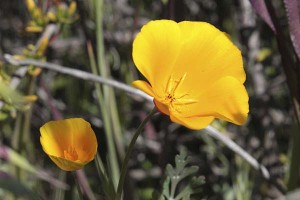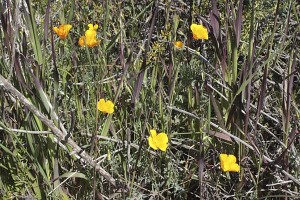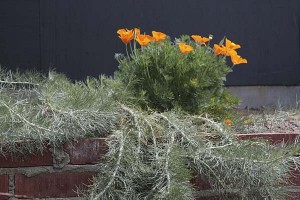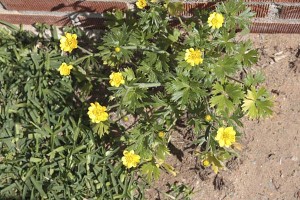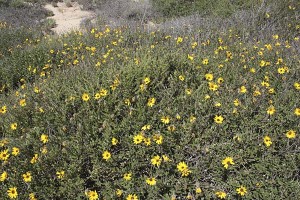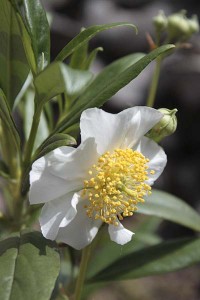I enjoy odd botanical science stories, and this was one of the stranger ones I’ve read in a while: Plants will look after clones of themselves but won’t lift a petal to assist an unrelated plant of the same species. That’s the controversial result of a study published in Ecology Letters and publicized in yesterday’s BBC Magazine.
Richard Karban of the University of California, Davis and Kaori Shiojiri of Kyoto University in Otsu, Japan studied the Great Basin sagebrush, Artemisia tridentata. They found that there’s a chance that a plant will alert another identical clone of a species when danger is near. But when two unrelated Great Basin sagebrushes are placed next to each other, the strangers won’t do anything to help each other out. (How the plants communicate wasn’t part of the study. Details…)
 (Left: Artemisia tridentata. Britton, N.L., and A. Brown. 1913. An illustrated flora of the northern United States, Canada and the British Possessions. Vol. 3: 530.)
(Left: Artemisia tridentata. Britton, N.L., and A. Brown. 1913. An illustrated flora of the northern United States, Canada and the British Possessions. Vol. 3: 530.)
These findings sound a lot like another study I’d mentioned just a little a year ago, where seedlings from the same parents will coexist happily in a pot, while seedlings of the same species that come from different parents will try to out-compete each other. Similar processes might be going on in both of these studies.
All this is interesting when you think about horticultural plants versus wild populations. Many plants in horticulture and some in agriculture are grown from cuttings, or are grafted or budded or layered. Each resulting plant is a clone of another and will have identical, predictable characteristics. If you buy a Fuji apple tree, you’d like to be assured that you get a Fuji apple, not a random seedling.
According to findings in the new study, identical horticultural plants might actually have some temporary advantages. For instance one plant might help its neighbor brace for immediate hazards in their environment, maybe something like an insect attack. (Someone should try out how a pot full of cuttings behave compared to the same species grown from seed from unrelated parents.)
While gardeners might enjoy predictability, biologists would still say that this is a bad thing from a long term evolutionary standpoint. An ailment that could wipe out one plant could wipe out all the plants with identical genetic makeup. Nepotism among clones of the same plant might be useful for the plant’s immediate circle, but is likely to be a dangerous thing for the future of the species.


